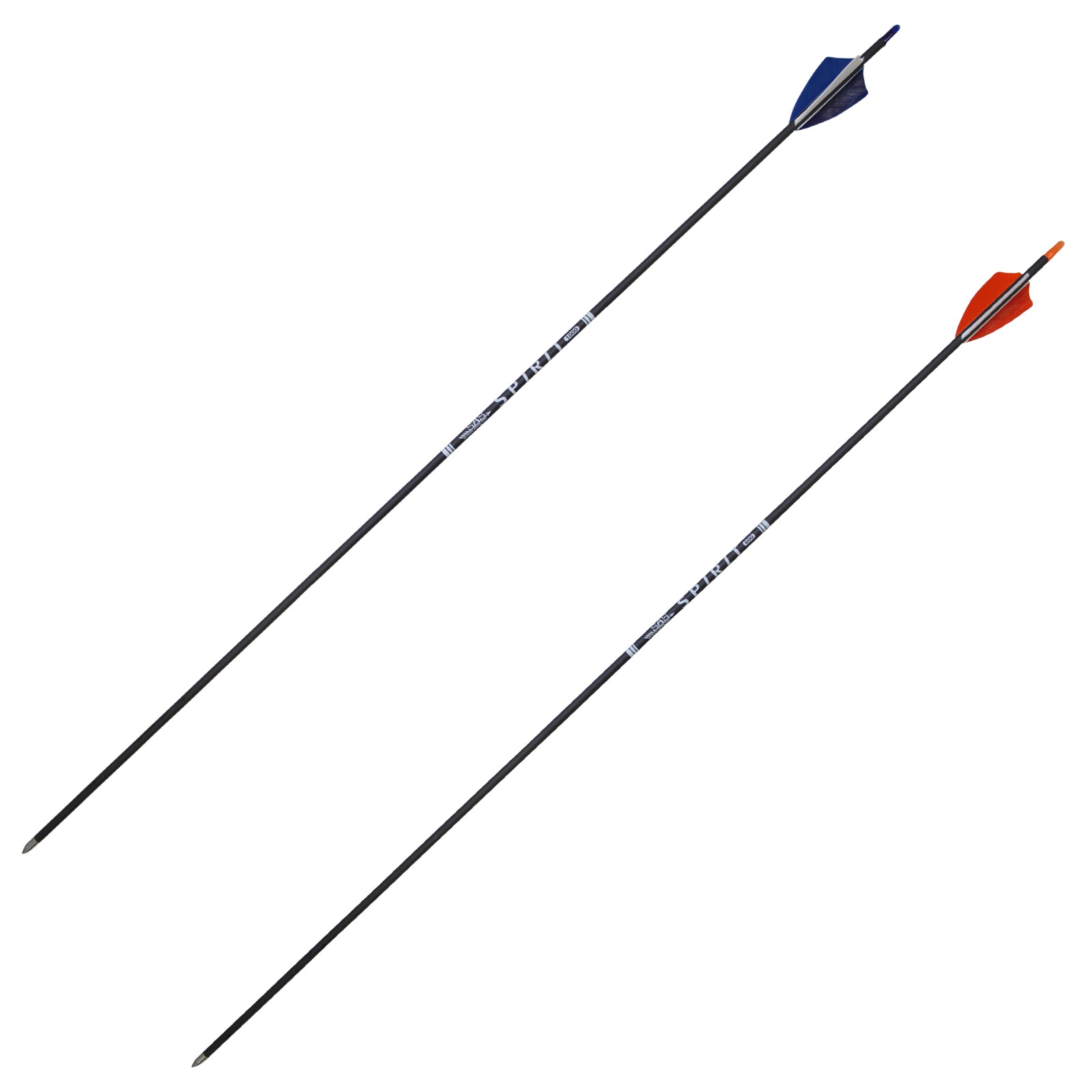US 48 States Only.
Tax Free Outside CA.
US 48 States Only.
Tax Free Outside CA.

Choosing the right arrows is a crucial part of your archery journey. It can make or break your success as a hunter or competitive target shooter, so it makes sense to try to understand all of their different parts and options. Whether you have a compound bow or a recurve, there’s something right for you!

In Part I of this guide, you learned the basics of arrow anatomy: materials, length, and diameter. Then, in Part II, you discovered the impact that weight, spine, and tip choice can have on the performance of your chosen bolt.
Now, you’ll become the ultimate arrow expert (or near enough!): this article gives you a window into the world of fletchings (aka vanes), nocks, and inserts. This knowledge is the last puzzle piece you need to decide on the perfect arrow for your bow. Are you ready?
At the back (the non-pointy) part of the arrow, there are three vanes made of plastic or feathers. These are the fletchings, and they’re crucial for the arrow’s stability and alignment.
The bigger a fletching is, the more surface for stability it provides, meaning that your form when shooting is a tiny bit less critical and can be corrected by the vanes. However, it will also slow your arrow down— it’s a tradeoff.
There are different fletching setups:
That’s not all, though: you still have to pick the material. Let’s take a look at your options:
An arrow’s nock is the little notch at the end of your arrow, the slit you place the bowstring in when you’re ready to shoot. Its main function is to control the projectile’s rotation and make it more accurate.
There are a few different types of nocks for you to choose from:
Before you commit to your choice, you also need to consider groove size. You can find both small (for recurve bows with low poundage) and large (for heavier recurves and all compound bows) groove sizes. You can tell a nock is right when you hear a ‘click’ as you insert the string.
Choosing special inserts is a pretty advanced move, so you only need to worry about it if you want to. You have both composite and aluminum inserts in a lot of different diameters. Whatever insert you choose, make sure that it fits the arrow tightly, as a loose insert will ruin your accuracy.
To install the insert, make that bit of the shaft’s surface a bit rougher (for increased adhesion) and use the right glue: epoxy for carbon shafts as well as for composite inserts onto aluminum, hot-glue for aluminum on aluminum shafts or composite shafts.
There! Now, you’re an expert on arrow components and can make a fully educated choice to slay your next shooting trip. Choosing the right arrow for your compound bow or recurve bow will give you just the edge you need to stand out from the crowd. Get to it!
Leave a comment